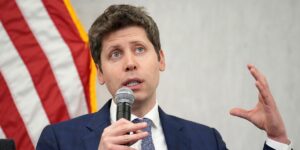- The Pound Sterling gives back some Fed Powell’s dovish remarks-driven gains against the US Dollar.
- Fed’s Powell warns of downside labor market risks at Jackson Hole Symposium.
- BoE’s Bailey states acute challenges in the UK economy due to reduced labor force participation.
The Pound Sterling (GBP) corrects to near 1.3480 against the US Dollar (USD) from its Friday’s high of 1.3544 during the European trading session on Monday. The GBP/USD pair gained sharply on Friday as comments from Federal Reserve (Fed) Chair Jerome Powell, in his speech at the Jackson Hole Symposium on Friday, signaled that he has turned dovish on the interest rate outlook.
Investors had anticipated that Powell would reiterate a “wait and see” approach on interest rates. However, a surprise dovish tone increased the risk appetite of investors significantly.
However, the US Dollar and US Treasury yields have come under pressure. The US Dollar Index (DXY), which tracks the Greenback’s value against six major currencies, posted a fresh, almost four-week low around 97.60. 10-year US Treasury Yields declined to 4.24%. At the time of writing, the DXY has rebounded to near 98.00.
Meanwhile, investors brace for a less volatile trading day for the Pound Sterling as the United Kingdom (UK) markets are closed on Monday on account of the Summer Bank Holiday.
Pound Sterling Price Today
The table below shows the percentage change of British Pound (GBP) against listed major currencies today. British Pound was the strongest against the Euro.
| USD | EUR | GBP | JPY | CAD | AUD | NZD | CHF | |
|---|---|---|---|---|---|---|---|---|
| USD | 0.23% | 0.16% | 0.29% | 0.04% | 0.02% | 0.08% | 0.10% | |
| EUR | -0.23% | -0.08% | 0.00% | -0.19% | -0.15% | -0.15% | -0.13% | |
| GBP | -0.16% | 0.08% | -0.08% | -0.11% | -0.13% | -0.07% | -0.05% | |
| JPY | -0.29% | 0.00% | 0.08% | -0.19% | -0.24% | -0.14% | -0.07% | |
| CAD | -0.04% | 0.19% | 0.11% | 0.19% | -0.00% | 0.07% | 0.06% | |
| AUD | -0.02% | 0.15% | 0.13% | 0.24% | 0.00% | 0.06% | 0.08% | |
| NZD | -0.08% | 0.15% | 0.07% | 0.14% | -0.07% | -0.06% | 0.02% | |
| CHF | -0.10% | 0.13% | 0.05% | 0.07% | -0.06% | -0.08% | -0.02% |
The heat map shows percentage changes of major currencies against each other. The base currency is picked from the left column, while the quote currency is picked from the top row. For example, if you pick the British Pound from the left column and move along the horizontal line to the US Dollar, the percentage change displayed in the box will represent GBP (base)/USD (quote).
Pound Sterling surrenders some Powell’s dovish comments-driven gains against US Dollar
- The Pound Sterling is broadly firm against the US Dollar as Fed’s Powell has signaled that he is open to unwinding monetary policy restrictiveness.
- On Friday, Fed Chair Powell said, “Nonetheless, with policy in restrictive territory, the baseline outlook and the shifting balance of risks may warrant adjusting our policy stance.”
- Powell warned of growing labor market concerns, which are paving the way for monetary policy adjustments. “Downside risks to employment are rising, and if those risks materialize, they can do so quickly,” Powell said.
- A dovish commentary from Fed’s Powell was surprising for financial market participants as they were anticipating that he would reiterate the need to hold interest rates at their current levels until officials get clarity on whether the impact of tariffs on inflation would be one-time or persistent. However, Powell clarified that unfolding tariff risks on inflation don’t appear to be long-term.
- “Possible that tariff-driven upward pressure on prices could spur lasting inflation dynamic, but unlikely, given downside risks to the labor market,” Powell said.
- For fresh cues on inflation, investors will focus on the US Personal Consumption Expenditure Price Index (PCE) data for July, which is scheduled to be released on Friday. Currently, traders are confident that the Fed will cut interest rates in the September policy meeting, according to the CME FedWatch tool.
- On Friday, Bank of England (BoE) Governor Andrew Bailey also participated in the Jackson Hole Symposium and stated “acute challenges” faced by the UK economy. Bailey said that the economy is under pressure due to weak underlying growth amid reduced labor force participation since the Covid-19 pandemic. He warned that labor issues will stay for longer as “ageing is not going to turn around in the foreseeable future”, Reuters reported.
Technical Analysis: Pound Sterling forms an inverse H&S formation
The Pound Sterling trades firmly above 1.3500 against the US Dollar at the start of the week. The near-term trend of the GBP/USD pair has turned bullish as it has returned above the 20-day Exponential Moving Average (EMA), which trades around 1.3466.
The Cable is also forming an inverse Head and Shoulder (H&S) chart pattern, which leads to a bullish reversal after a corrective or downside move. The neckline of the H&S pattern is placed around 1.3580.
The 14-day Relative Strength Index (RSI) oscillates inside the 40.00-60.00 range, suggesting a sharp volatility contraction.
Looking down, the August 11 low of 1.3400 will act as a key support zone. On the upside, the July 1 high near 1.3790 will act as a key barrier.
Fed FAQs
Monetary policy in the US is shaped by the Federal Reserve (Fed). The Fed has two mandates: to achieve price stability and foster full employment. Its primary tool to achieve these goals is by adjusting interest rates.
When prices are rising too quickly and inflation is above the Fed’s 2% target, it raises interest rates, increasing borrowing costs throughout the economy. This results in a stronger US Dollar (USD) as it makes the US a more attractive place for international investors to park their money.
When inflation falls below 2% or the Unemployment Rate is too high, the Fed may lower interest rates to encourage borrowing, which weighs on the Greenback.
The Federal Reserve (Fed) holds eight policy meetings a year, where the Federal Open Market Committee (FOMC) assesses economic conditions and makes monetary policy decisions.
The FOMC is attended by twelve Fed officials – the seven members of the Board of Governors, the president of the Federal Reserve Bank of New York, and four of the remaining eleven regional Reserve Bank presidents, who serve one-year terms on a rotating basis.
In extreme situations, the Federal Reserve may resort to a policy named Quantitative Easing (QE). QE is the process by which the Fed substantially increases the flow of credit in a stuck financial system.
It is a non-standard policy measure used during crises or when inflation is extremely low. It was the Fed’s weapon of choice during the Great Financial Crisis in 2008. It involves the Fed printing more Dollars and using them to buy high grade bonds from financial institutions. QE usually weakens the US Dollar.
Quantitative tightening (QT) is the reverse process of QE, whereby the Federal Reserve stops buying bonds from financial institutions and does not reinvest the principal from the bonds it holds maturing, to purchase new bonds. It is usually positive for the value of the US Dollar.
Read the full article here















